2025 Mazda CX-70 Review: What's in a name? For this two-row CX-90, everything
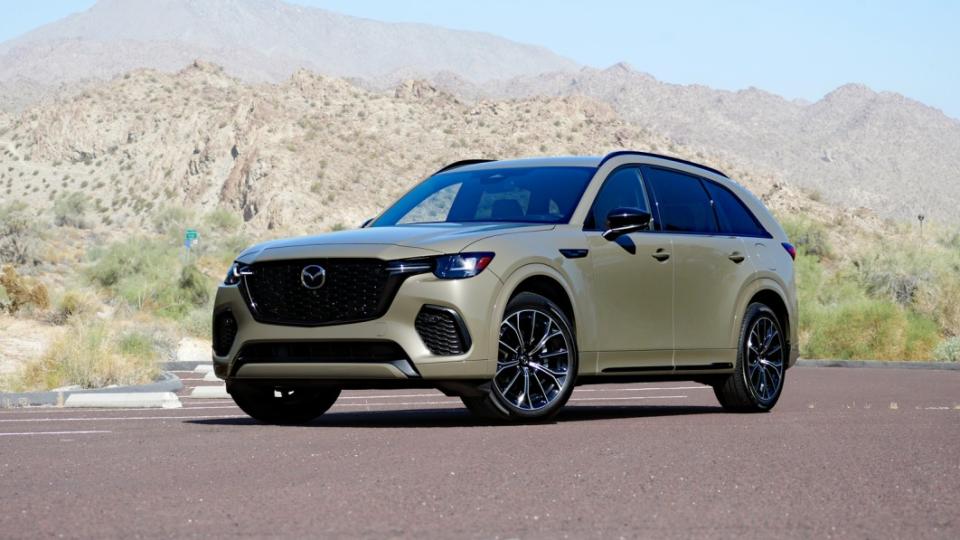
Pros: Luxurious interior; exceptional handling and steering; strong power; above-average fuel economy; more spacious than two-row rivals; comparatively low-priced PHEV
Cons: Infotainment won’t be for everyone; otherwise identical three-row CX-90 is more versatile; unrefined PHEV with so-so electric range
The 2025 Mazda CX-70 is effectively a two-row version of Mazda’s three-row CX-90. There are a few token styling tweaks up front, some unique color offerings, a power-folding second seat and some tech upgrades (that’ll certainly be added to the CX-90 eventually), but those are elements that could just as easily be included with an optional package. So why introduce a whole different model?
The answer is marketing and internet research. Quite simply, people searching for a two-row, midsize SUV – including luxury models Mazda wants to compete with – will not stumble upon the CX-90. It’s slotted into a silo with three-row SUVs, yet Mazda believes it has the feature content, interior panache, driving dynamics and looks to compare favorably to two-row SUVs like the Lexus RX, Jeep Grand Cherokee and BMW X5. There’s merit to that belief, but to get the CX-90 in front of those potential customers, it’s a lot simpler if it’s called a CX-70. It’s all about that initial discovery – if one of those potential customers ultimately gets a CX-90 anyway, they still bought a Mazda and the plan worked. It’s made even simpler by the fact the two are identically priced.
So that’s the explanation, but regardless of what it’s called, is it actually worth buying? Well, the CX-70 does deserve the comparisons to premium and luxury vehicles, especially if you’re looking toward that end of the market for a more engaging driving experience. For a big, midsize SUV, it is great to drive, especially if you’ve just come from a sport sedan. That applies to either of its two turbocharged inline-six engines or the CX-70 PHEV that’s considerably cheaper than rival plug-in hybrids.
Interior quality is exceptional for a mainstream brand, and although the switchgear and supporting plastics aren’t quite up to Lexus or BMW levels, the upper trim levels boast beautiful finishings that absolutely stack up to the luxury crowd. At a lower price, we should add. Now, Mazda’s infotainment system won’t be for everyone, although if you are used to Lexus or BMW, it shouldn’t be that foreign of a concept to mostly control the screen using a controller on the center console. Unlike the CX-90 (for now at least), every CX-70 comes with touchscreen capability for Apple CarPlay and Android Auto only.
Now, because the CX-70 is a three-row SUV with the third row deleted, it has a massive cargo area for a two-row model. It may fall just short of the boxier Honda Passport (itself just a two-row, last-generation Honda Pilot), but it betters the Grand Cherokee and blows away the Lexus RX. There’s also some underfloor storage space in place of a third row, but it’s difficult to access and, honestly, we think it’s more likely that someone would use the CX-90’s third-row seat.
And as such, we’d recommend the CX-90 instead of the CX-70 just because of that added versatility and because the price is identical. Should you dig one of the CX-70’s special colors, though, and want touchscreen capability on lower trims, it seems like the lower number is what you’ll want.
Interior & Technology | Passenger & Cargo Space | Performance & Fuel Economy
What it's like to drive | Pricing & Trim Levels | Crash Ratings & Safety Features
What's new for 2025?
The CX-70 is a new model for 2025, but as described above, it’s basically a two-row variant of the three-row CX-90. So the name is new, but car, not so much. It is updated compared to the CX-90, though, most notably with touchscreen capability standard on every trim level.
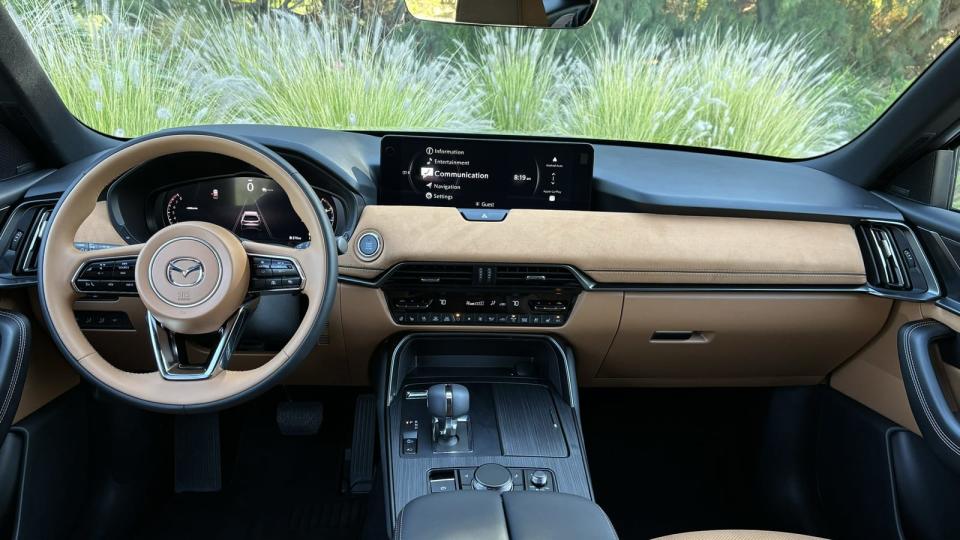
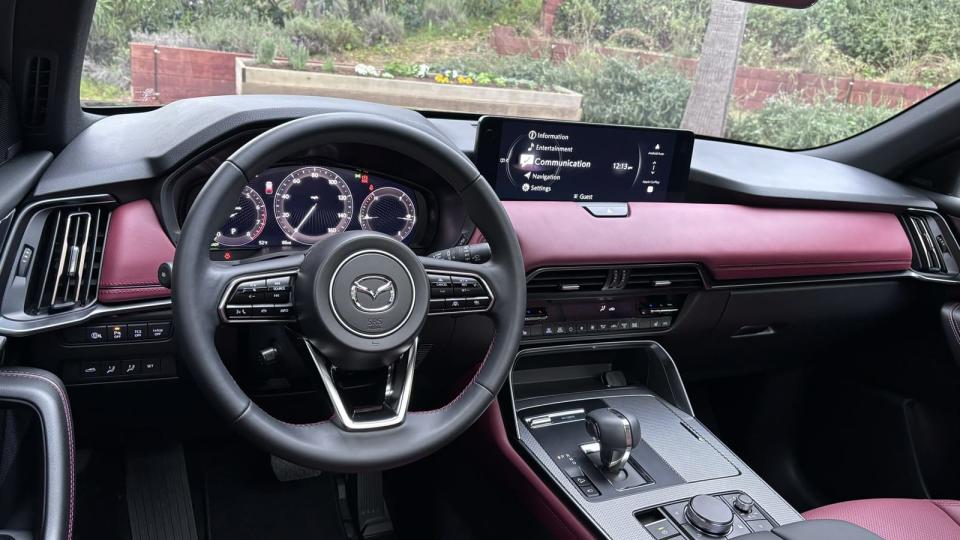
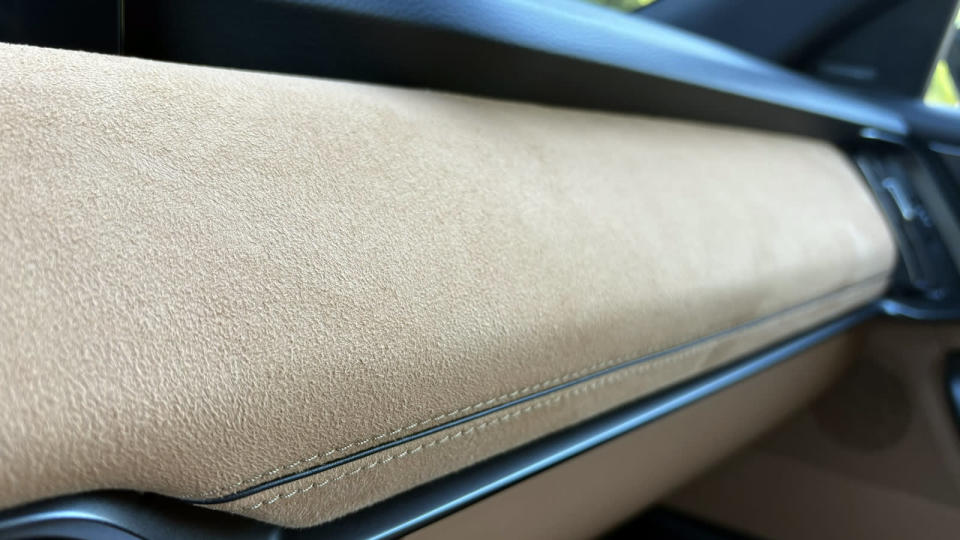
What are the CX-70 interior and in-car technology like?
The CX-70 interior is virtually identical to the CX-90s, with a few exceptions we’ll get to, mostly in the next section. You can get it in a red two-tone color scheme not available in the CX-90, but other options are shared such as the beautiful tan shown above (the seats are covered in Nappa leather; the dash trim is a suede-like cloth). Again, the commonality doesn’t really matter. What does is that this cabin looks great – its clean design puts visual emphasis on its elevated materials while not eliminating physical controls. Specifically, it still has climate control buttons, which seems like a win these days.
All but the base Preferred trim level have a 12.3-inch digital instrument display with two main views: a traditional three-gauge layout and, when adaptive cruise control is at the ready, a more modern design that pushes the speedo and tach to the screen edges while an active driver assistance graphic illustrates what the car is doing and detecting around it.
Every trim level gets the same 12.3-inch central display. It operates as a touchscreen only when operating Apple CarPlay and Android Auto, which can also be operated by the center console control knob and supporting menu buttons. Doing so is a bit confusing, and it takes some playing around with to figure it out, but we’ve found in our CX-90 that having the redundant rotary knob/button control of CarPlay and Android Auto can actually be a benefit. Now, if you want to do anything else with the infotainment system such as select a radio station, program the native navigation system or adjust some other vehicle setting, you must use the center console controls. Generally, we’re OK with this, as it’s perfectly intuitive and doesn’t divert your eyes away from the road as much. To that end, the screen is much higher on the dash and closer to the driver’s field of vision. It’s also further away from your hands, which is one detriment to using the CarPlay/Android touch capability. In total, it won’t be for everyone and is certainly unusual, but we think it’s fine.
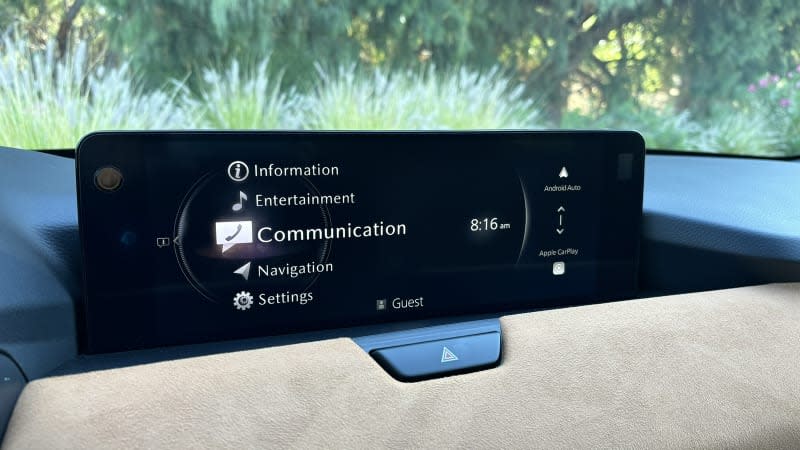
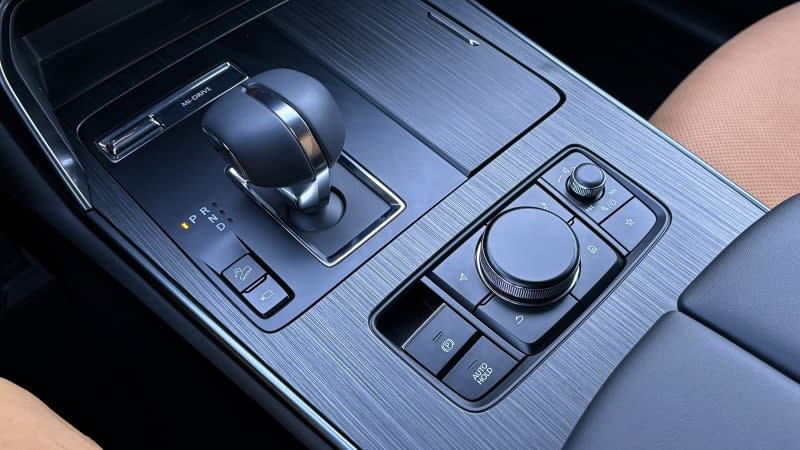
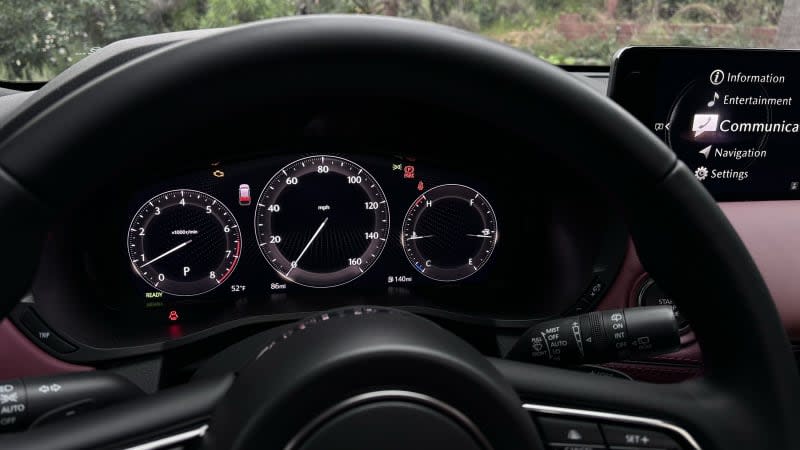
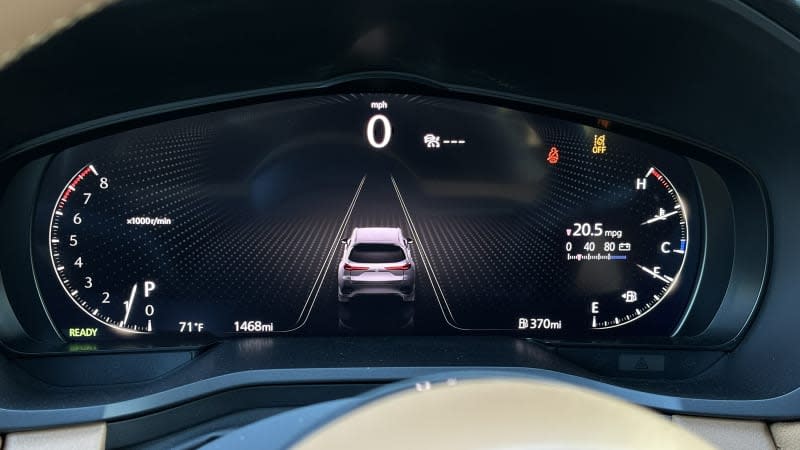
How big is the CX-70?
As previously stated, the CX-70 has two seating rows in a body originally intended to have three. Instead of that third row, there is a “sub trunk” as Mazda calls it, with some bins designed to keep smaller items in place. We’re not sure how helpful this space is, however, as it’s quite a reach to access them. Even if a two-row SUV is all you want, we think you’d be more likely to occasionally use a third row instead of this sub trunk. Cargo capacity stands at 39.6 cubic feet with the back seat raised, and when lowered using the CX-70’s remote power-folding capability (not available on CX-90), it goes up to 75.3. This makes the CX-70 one of the most voluminous two-row crossovers.
Space for passengers is similarly generous. Its backseat legroom matches the more family-oriented Honda Passport, betters the similarly luxurious Jeep Grand Cherokee by an inch, and betters the far more expensive Lexus RX by 2 inches. Headroom is greater than the RX, too, and in general, the CX-70’s back seat just feels more airy and open.

 Yahoo Autos
Yahoo Autos 